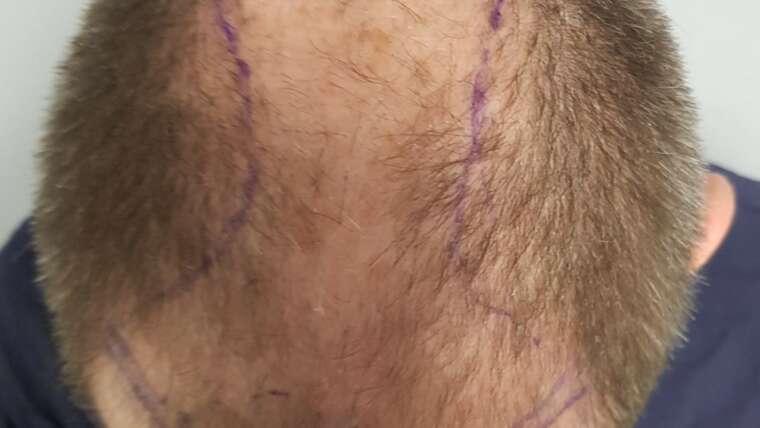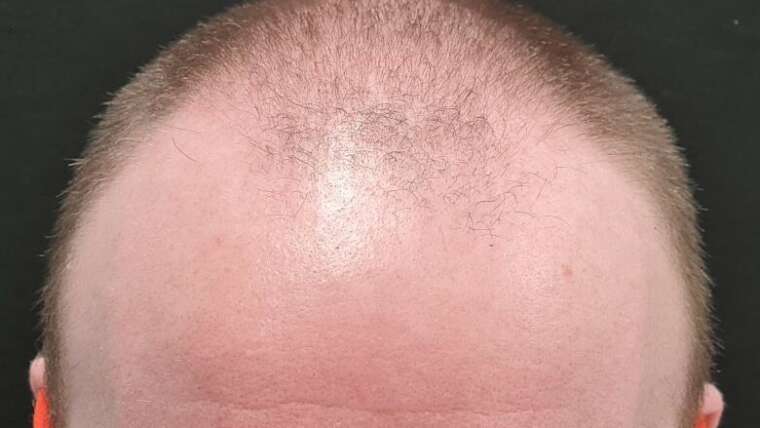Androgenetic alopecia (common baldness) characterizes a very large percentage of men globally. It is about a pathological gradual hair loss from the scalp and final degeneration of the hair follicles which do not produce hair any more. This development leads to permanent hair loss. It is a combination of genital predisposition and effect of androgen hormones (testosterone) on the hair follicles. Specifically, hair loss starts from the frontal hairline and develops backwards to the natural beginning of scalp hair (the vortex). There are different degrees of androgenetic alopecia which can also occur in women either before or after menopause.
This predisposed hair loss involves the entire scalp and not just the usual localised area of alopecia. However, the hair from the occipital part of the scalp does not fall! This is mainly due to the different and in a smaller degree activation of the metabolic process that leads to hair loss and hair follicle degeneration. However, the concept of diffuse androgenetic alopecia is also observed, where the occipital part of the scalp also suffers and becomes thinner in density and hair growth quality.
To date, androgenetic alopecia cannot be prevented or stopped since it is genetically predisposed. Still the original hair follicles can be supported by conservative treatments in order to slow down the rate of hair loss and therefore prolong the alopecia’s evolution in time. Hair loss injectable treatments like autologus PRP (Platelet Rich Plasma) or other heterologous hair loss solutions, LLLT laser technology (laser comb), special shampoos and lotions (containing vitamin and special trace elements as well as anti oxidants), are quite effective.
The immediate treatment for androgenetic alopecia is essentially the replacement of the lost hair, either by using real ones (hair transplantation) or by using substitutes like wigs or hair density camouflaging materials and methods like topic and scalp pigmentation.
The earlier someone starts treating androgenetic alopecia (especially when there is a family history of high-grade alopecia), the more stable he will keep his image over time. So he will not feel frustrated or experience any other psychological negative impact on his personal, social or professional life, due to the alteration of his image because of scalp hair loss.
Prior to hair restoration, the diagnosis of the patient’s hair loss problem is absolutely necessary. His general health as well as the health of the scalp and the quality of the hair growth is assessed. It is very important to find out if the patient’s alopecia is a contraindication to hair transplantation or if there is a chance of lower than the usually expected growth rate of the transplanted hair. Proper patient consultation is not only necessary but as a sign of professionalism, it maintains honesty and reliability in the patient-surgeon relationship.
In women, diagnosing alopecia is a more complicated process. A medical history, hematological, biochemical, and possibly hormonal testing and
collaboration with other medical specialties may be necessary to diagnose and confirm the indication for hair transplantation.



